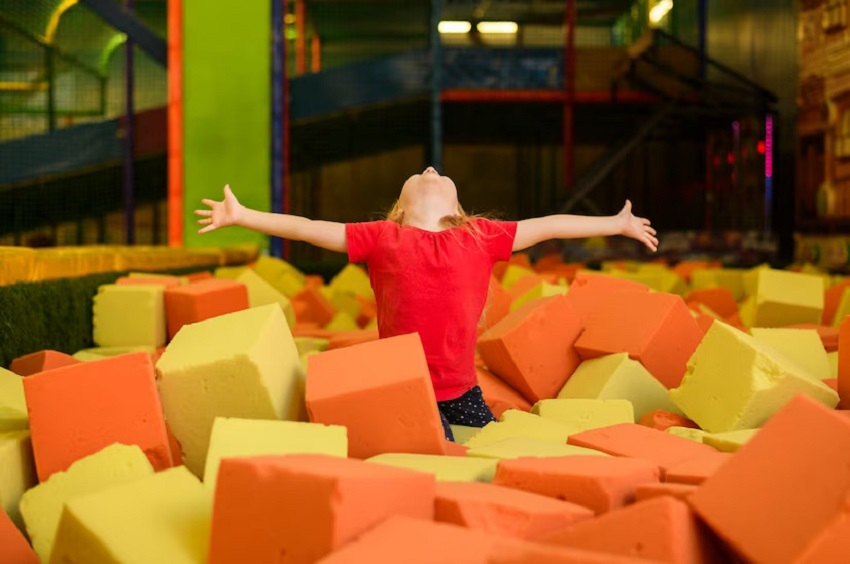Starting a bounce house business can be an exciting and profitable. With the rising popularity of inflatable party rentals, bounce houses have become a staple at birthdays, family gatherings, and other special events. If you’re looking to enter the bounce house industry and start your own business, this guide will provide you with how to start a bounce house business.
Bounce houses, inflatable castles or moonwalks, are large structures designed for people, particularly children, to jump and play in. They come in various themes and sizes, catering to different age groups and preferences. The demand for bounce houses has steadily increased, making it a lucrative business opportunity for entrepreneurs.
How to start a bounce house business
Step 1: Research and Market Analysis
Before diving into the bounce house business, conducting thorough research and analyzing the market is essential. Understand your target market and demographics. Determine the age groups, locations, and occasions where bounce houses are in high demand. This will help you tailor your offerings and marketing strategies accordingly.
Additionally, analyze the competition in your area. Identify other bounce house rental companies and assess their services, pricing, and customer reviews. This information will give you insights into the market saturation and help you differentiate your business.
Step 2: Business Plan and Legal Considerations
Developing a comprehensive business plan, including a bounce house business, is crucial for any entrepreneurial venture. Outline your goals, target market, marketing strategies, financial projections, and operational procedures. A well-defined plan will serve as your roadmap and guide you through the various stages of your business.
Next, register your business and obtain the necessary licenses and permits. Check with your local authorities to understand the specific requirements for operating a bounce house rental business. Additionally, consider insurance coverage to protect your business from liability in case of accidents or damages.
Step 3: Equipment and Inventory
Investing in high-quality bounce house equipment is vital for the success of your business. Determine the types and sizes of bounce houses you want to offer, considering popular themes and designs that appeal to your target market. Research reliable suppliers or manufacturers and choose equipment that meets safety standards and durability requirements.
You may also consider expanding your inventory to include other inflatable structures like slides, obstacle courses, or interactive games. Offering diverse options will attract more customers and increase your revenue potential. Don’t forget to establish proper maintenance procedures to ensure the longevity and safety of your equipment.
Step 4: Marketing and Promotion
You need to develop a strong marketing strategy to attract customers and build brand awareness. Start by creating a catchy business name and designing a memorable brand logo. Build a professional website showcasing bounce houses, providing rental information, and enabling online bookings.
Utilize social media platforms to engage with your target audience and share engaging content related to bounce houses and party planning. Consider running targeted online advertising campaigns to reach potential customers in your local area. Offline marketing strategies like participating in community events or partnering with event planners can also effectively reach your target market.
Step 5: Booking and Operations
Make the rental process convenient for your customers by setting up an online booking system. Streamline the process by allowing customers to check availability, select their desired bounce house, and complete the booking and payment online. This will save time and effort for both you and your customers.
Establish clear rental policies and contracts to ensure transparency and avoid any misunderstandings. Clearly outline the terms and conditions, including rental duration, delivery and setup details, safety guidelines, and penalties for damages or late returns. By setting clear expectations, you can provide a positive rental experience for your customers.
Step 6: Customer Service and Satisfaction
Delivering excellent customer service is key to building a strong reputation and gaining repeat business. Train your staff to prioritize safety and provide friendly and helpful customer assistance. Educate them on the proper setup and takedown procedures for bounce houses and ensure they are well-versed in addressing customer inquiries and concerns.
Encourage customers to leave reviews and testimonials on your website or social media platforms. Positive feedback will attract new customers and reassure potential customers about the quality and reliability of your services. Implement a feedback loop to improve your operations and address any areas of improvement continuously.
Step 7: Expansion and Growth
Once your bounce house business thrives, you may consider expanding and exploring new opportunities. This could involve adding additional services such as party planning, providing concessions, or offering themed party packages. Assess the market demand and feasibility of such expansions in your area.
Furthermore, if you have built a strong brand and operational model, you might explore franchising or opening multiple locations. This can exponentially increase your reach and revenue potential. However, before expanding, thorough planning and careful consideration of the associated costs and logistics are essential.
FAQs
| Question | Answer |
| What is a bounce house? | A bounce house, also known as an inflatable castle or moon bounce, is a large structure often used for entertainment, particularly for children’s parties or events. |
| Is starting a bounce house business profitable? | Yes, starting a bounce house business can be profitable with a good business plan, market demand, and effective marketing strategies. |
| How to research the market demand? | Conduct market research to assess your area’s demand for bounce house rentals. Analyze competitors, target demographics, and seasonal trends to identify potential opportunities and challenges. |
| What equipment do I need to start a bounce house business? | You will need bounce houses or inflatable structures, blowers for inflating the equipment, stakes or sandbags for securing them, extension cords, a dolly or hand truck for transport, and safety equipment such as mats and repair kits. |
| Do I need any licenses or permits? | Check with your local government authorities regarding the licenses, permits, and regulations required to operate a bounce house business in your area. This may include business licenses, insurance, safety certifications, and adherence to zoning laws. |
| How should I price my rentals? | Consider factors such as the size and type of bounce houses, duration of rentals, delivery and setup fees, and any additional services or packages offered. Research local market rates to ensure your prices are competitive yet profitable. |
| How can I market my bounce house business? | Utilize various marketing strategies such as creating a professional website, using social media platforms, networking with event planners and party venues, distributing flyers or brochures, and offering referral incentives. Online directories and search engine optimization can also help increase visibility. |
| What safety measures should I implement? | Prioritize safety by ensuring your equipment meets industry standards and is regularly inspected for damages or defects. Develop customer safety guidelines, provide adequate supervision, and educate renters on proper usage and precautions. Obtain liability insurance to protect your business. |
| How should I handle bookings and reservations? | Set up a booking system that allows customers to reserve bounce houses online or through phone calls easily. Maintain a calendar to manage availability and track reservations. Communicate terms and conditions, including cancellation policies and refund procedures. |
| What are some additional services I can offer? | Consider offering add-ons such as concession stands (e.g., popcorn, cotton candy), party packages, themed decorations, and entertainment services like clowns or face painting. These extras can enhance the customer experience and generate additional revenue. |
Conclusion
Starting a bounce house business can be a rewarding and profitable venture. By following these steps and implementing effective marketing and operational strategies, you can establish a successful business in the inflatable party rental industry. Remember to prioritize customer satisfaction, maintain the highest safety standards, and continuously adapt to market trends to stay ahead of the competition.



